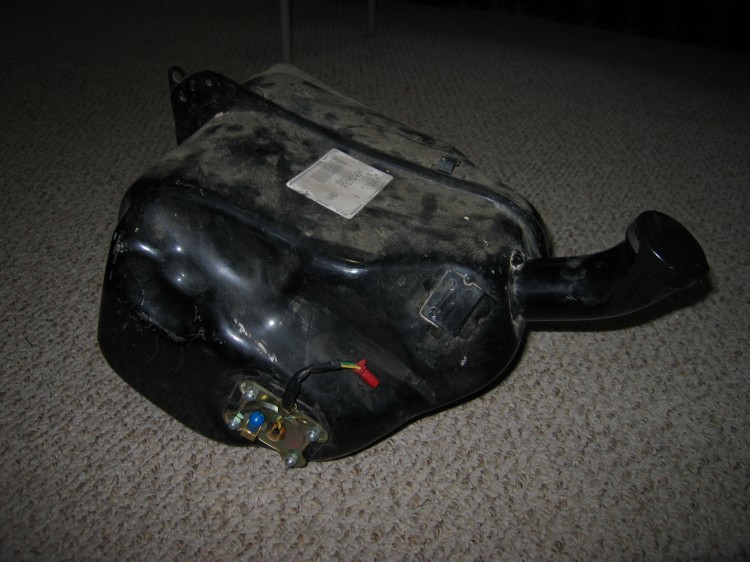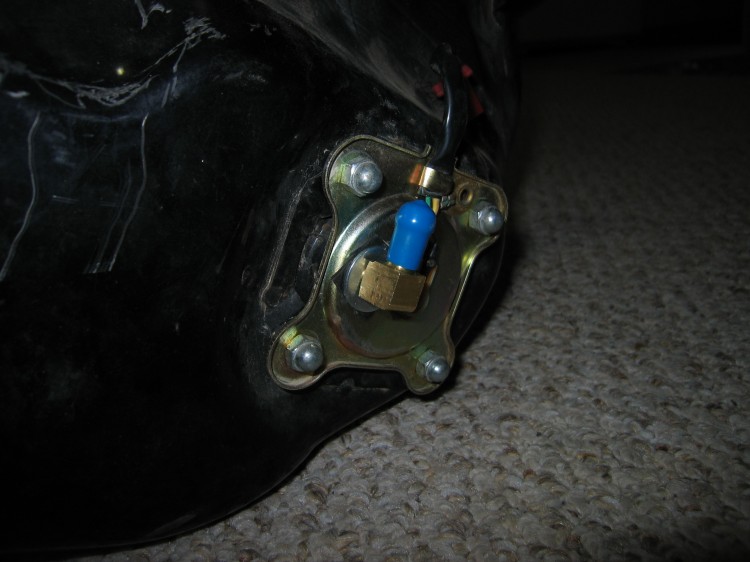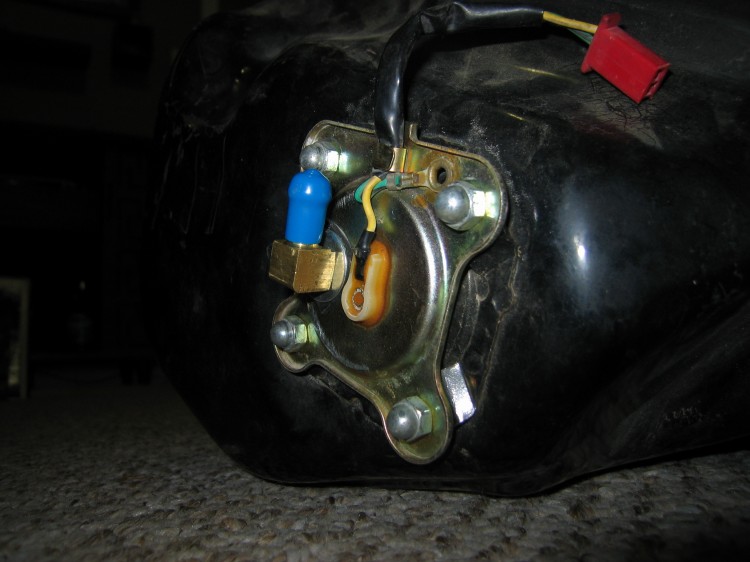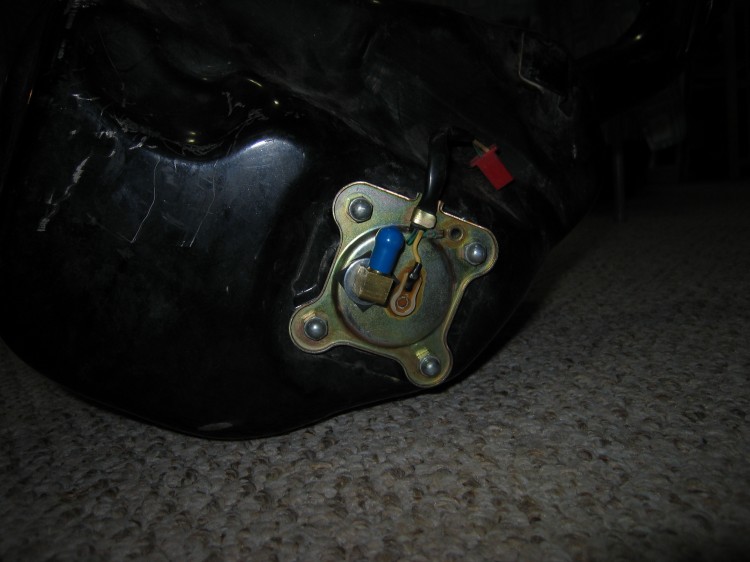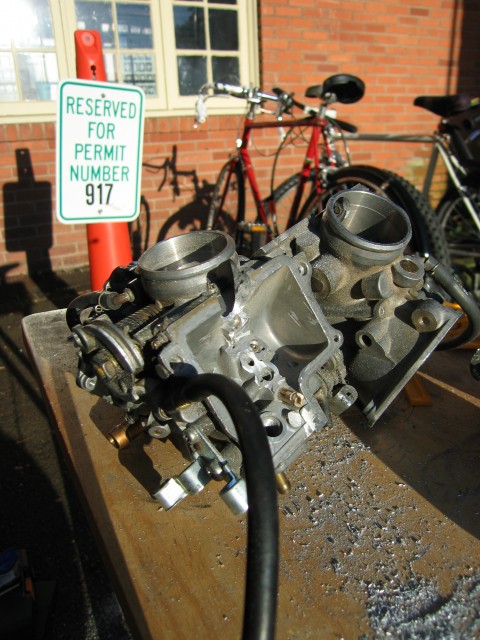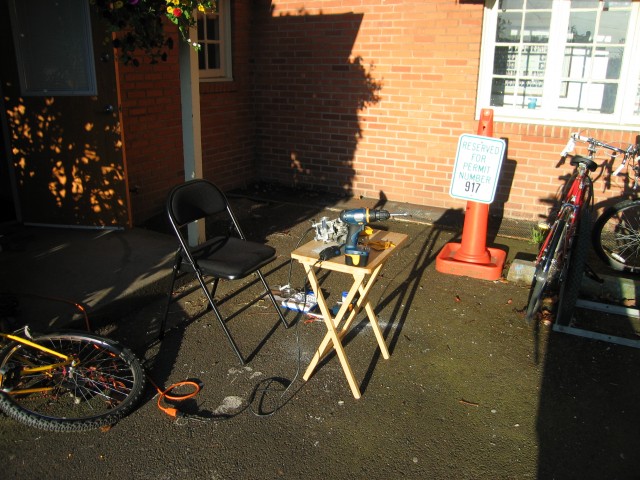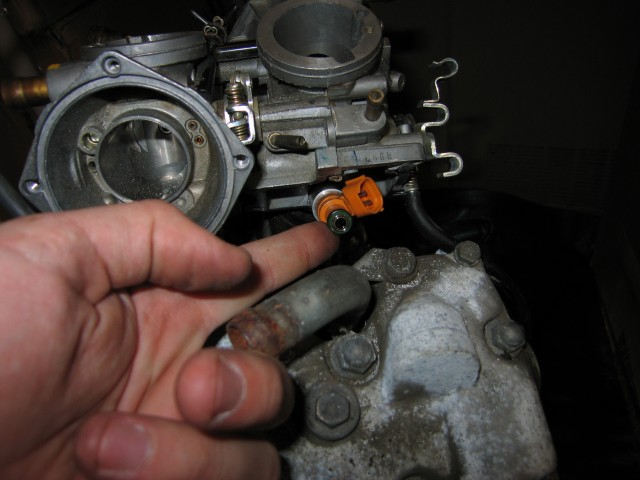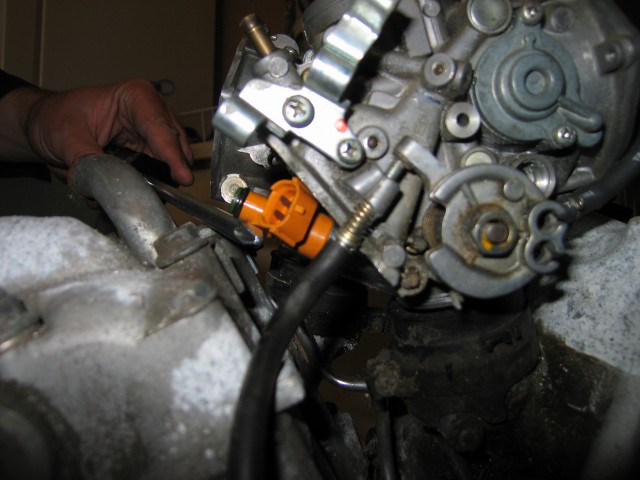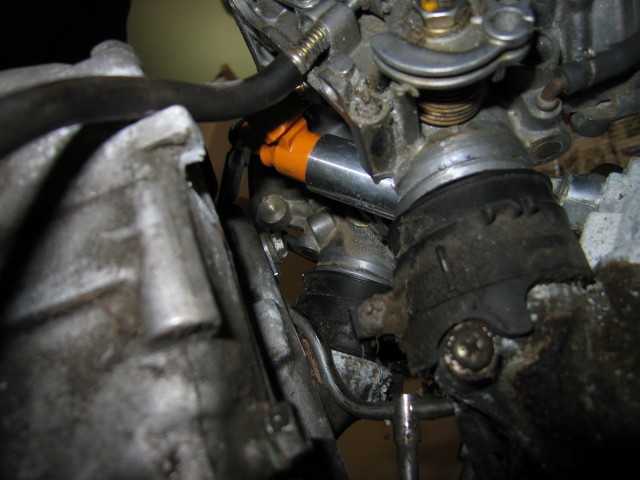Today I successfully installed the injector bungs into the PC800 carbs. Many months back, I had drilled the requisite holes for injector bungs just below the butterfly valves. Recent playing with the electrical system on my XL500S sparked renewed desire to complete the PC800 fuel injection project. After cleaning up the holes a bunch yesterday, today I was ready to JB Weld the bungs in place. The above picture shows both bungs JB Welded in place and waiting to be trimmed down to the cylinder walls. The orange things are injectors.
I used JB Weld SteelStik for its superior ability not to drip everywhere. It begins to set in about four minutes so working time is rather limited. The packaging claims that after an hour the stuff is structurally ready to be used. Not bad for a product that comes in a tube.
After a lot of quality time with a dremel tool, I shaved down the injector bung to be flush with the throttle body wall. I intentionally placed the injector partially into the throttle body passage.
Checking for clearance on the extra PC800 engine that Bart has been loaning me for many months. Thanks Bart!!!
Plenty of clearance for some injector bosses. The bosses are next on my list to make. More on that later.
The injector on the other side. In spite of how it looks, there will be enough room for the plug to clear the cylinder head. Hopefully I won’t run into trouble with things melting from being so close to the hot head.
Looking down the throat of one of the throttle bodies. Nice and smooth all the way down. The injector is just peaking into the bore.
Good fit in this direction, too. The black thing above is the air cleaner box. Plenty of room to route fuel lines and whatnot.
My temporary workbench. I have another project laid out on my wooden workbench so thus I am using this old table I got from an ex girlfriend many years ago. The next step is to use the brass blocks (one is just above the permanent marker just left of center in the photo) to create injector bosses. I have everything I need except for a ream of appropriate size. None of the shops around here carry reams. It looks like I might have to suck up the cost and buy one from McMaster Carr unless I can find a better local source.
Following the injector boss creation and mounting, I will then complete mounting the sensors on the air intake manifold (temp sensor, manifold air pressure sensor, ambient air pressure sensor). I also will mount the throttle position sensor onto the throttle bodies with an aluminum plate that is out of the frame of the photo. Then it will be time to install the wide-band O2 sensor and associated gauge on my PC800, purchase a fuel pump, pressure regulator, and fuel filter, and start installing things. Perhaps by the end of winter term (which starts tomorrow), I will be assembling parts onto the PC800 and be in the home stretch of this project!













